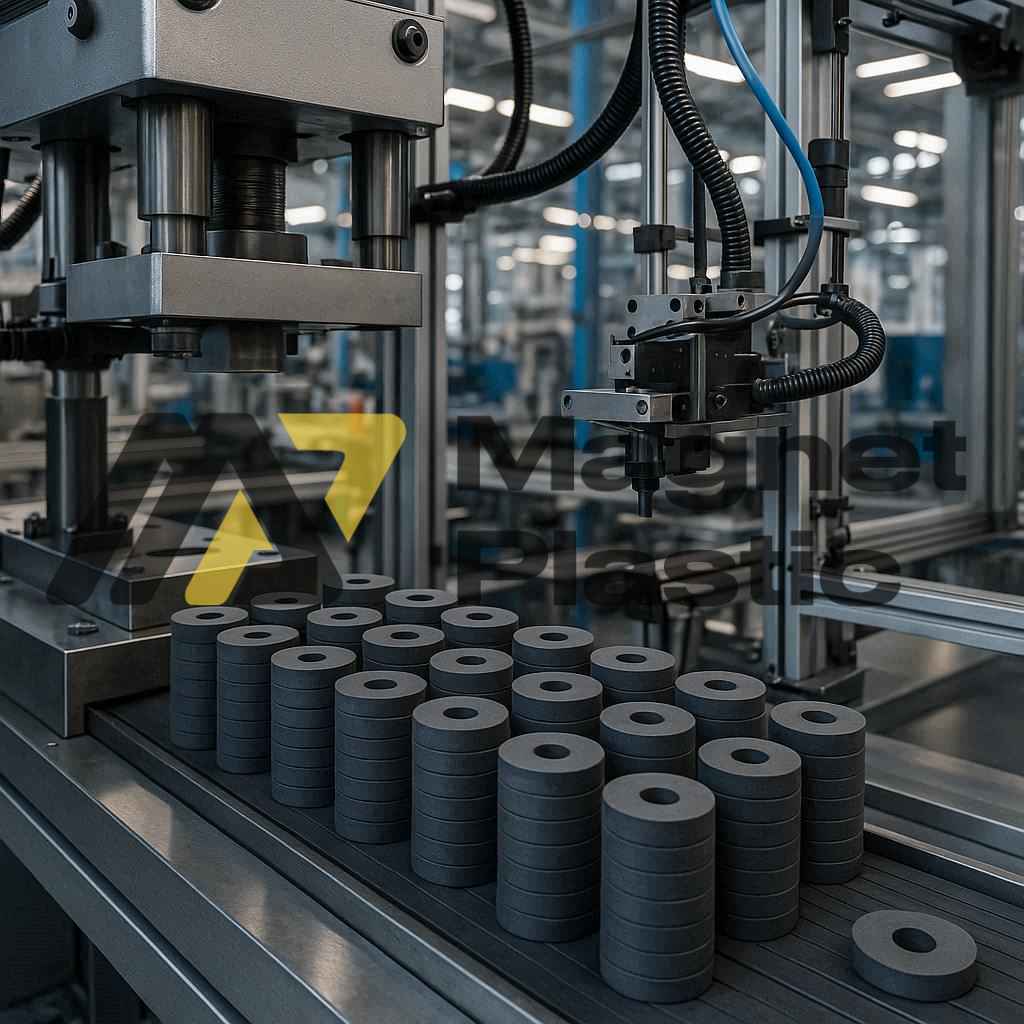Fabrication of Ferrite Magnets
Ferrite magnets, also known as ceramic magnets, are widely used in industry thanks to their low cost, high resistance to demagnetization, and durability. Although they are not as powerful as neodymium magnets, their stability and price make them an excellent choice for many applications.
Raw Materials and Composition
The manufacturing process begins with the selection of high-quality raw materials. Ferrite magnets are primarily made of iron oxides combined with barium or strontium. This mixture ensures that the final product has stable magnetic properties and good mechanical resistance.
Their chemical composition also provides excellent corrosion resistance, making them suitable for outdoor use or humid environments.
Step-by-Step Manufacturing Process
To achieve a high-quality final product, the process follows several precise steps:
- Mixing and Grinding
The raw materials are finely ground into a homogeneous powder. The finer the powder, the better the magnetic quality and density of the final magnet. - Molding
The powder is compacted in molds under high pressure. At this stage, a magnetic field can be applied to align the particles, improving the final magnet’s performance. - Sintering
The compacted shapes are heated at 1,000–1,300 °C in specialized furnaces. This process partially fuses the particles, forming a dense and solid structure. - Cooling and Machining
After sintering, the magnets are slowly cooled to prevent cracks or internal stress. They are then machined to achieve the exact dimensions and shapes required. - Final Magnetization
The magnets are exposed to a strong magnetic field to induce their permanent magnetic properties, making them ready for industrial use.
Key Advantages
Ferrite magnets offer several important benefits:
- Low production cost
- Excellent resistance to demagnetization
- Durability in harsh environments
- Resistance to temperatures up to 250 °C
Industrial Applications
Thanks to their properties, ferrite magnets are used in a wide range of sectors, including:
- Electric motors and generators
- Speakers and audio systems
- Holding and clamping systems
- Magnetic separators in recycling and mining
Their versatility makes them an essential component in numerous industrial and commercial applications.
Conclusion
The fabrication of ferrite magnets combines technology and precision to produce a reliable, cost-effective, and durable product. At MagnetPlastic, our engineering, laboratory, and R&D teams design magnets and magnetic systems tailored to each client’s needs.
